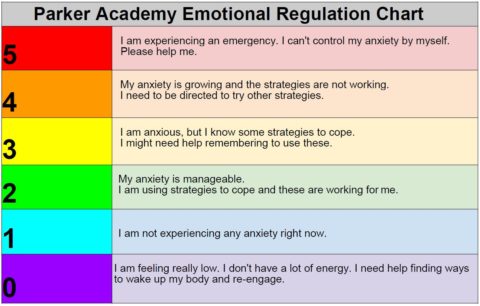by Martha Burns, Ph.D
STRESS! Just the word alone causes an anxiety reaction for many of us even though stress is a part of everyone’s daily life. In fact, days on end without any stress at all would be pretty boring even though we probably all long for that sometimes.
Neuroscientists have explained how some stress is actually good for us; it helps us stay alert and adapt to changes in the world around us.
Educators and athletic coaches have found that the stress of competition through grading or scoring helps students and athletes maintain motivation. But stress can also be very harmful. I suspect all of us have had personal experiences where we made a critical mistake or forgot something very important because we were stressed out about a problem in our daily life. So what’s the difference? Is there a dividing line between good stress and bad stress? Is it the type of stress or quantity that matters?
Although a simplistic explanation is that stress may be like many other inevitable aspects of human life – in moderation stress is good for us, in excess it is harmful. Brain scientists clarify the distinction from a biological and psychological perspective. The scientists differentiate between “tolerable stress” and “toxic stress” and emphasize how the effects on the body are quite different.
 Tolerable vs Toxic Stress
Tolerable vs Toxic Stress
To understand these two types of stress it’s helpful to begin with an explanation of the brain’s stress mechanism. For these purposes we can separate the brain into two major divisions. We are all familiar with the advanced thinking part of the brain – the cerebrum. When we conjure an image of the human brain, it is the cerebrum we picture. But beneath that part of our brain is a more ‘body function’ oriented brain region that handles emotions, as well as basic body states like hunger and sleep. In that region there is the limbic system where emotions like fear, anger and joy are processed. Nearby is an area called the hypothalamus and a gland called the adrenal gland which work together to release hormones in response to emotions or other body states.
What physically happens with stress?
One hormone produced by the adrenal gland in response to stress is called cortisol. That hormone is used by the body to increase our blood sugar level to enhance metabolism – helping us turn food into energy. But at the same time it suppresses our immune system, making us more susceptible to illness. Many of us are familiar with the practical effects of increased cortisol if we feel ravenously hungry, for example, after a stressful day.
Another hormone produced by the adrenal gland in response to stress is adrenaline, also known as epinephrine. Adrenaline causes an increase in breathing rate as well as blood circulation while it prepares our muscles for exertion. Like cortisol, adrenaline increases metabolism, especially for carbohydrates – thereby giving us the energy we need to avoid or tackle whatever it is that causes our stress.
Tolerable stressors give us the energy and strength through the increased metabolism and heightened bodily response, to get a job done effectively and efficiently. For school-aged children, the stress of an upcoming test may provide a student with the motivation and energy to read and memorize new material. For an athlete, the stress of competition should help provide the edge needed to win. In all of these examples, the stress remains tolerable because there is an end in sight – the work project is completed. The excess hormones then decrease, and there is a period of rest or relaxation that follows.
The difference with toxic stress is that there is no relief – the stress is ongoing and unremitting. The fight and flight hormone levels remain elevated for extended periods of time, not only negatively affecting the human body, but also changing the brain. It’s important to remember in this regard that the brain is an experience dependent organ – it gets better at what it does most. Practice the piano a lot and you will push your brain to increase musical skills.
But, herein lies the problem with chronic toxic stress – the brain is focused on and therefore over-exercising stress responses (fight or flight). When that happens, the brain is preparing us to act quickly and decisively, no time for thinking about the problem. So in essence, the thinking brain is blocked, so it is not exercising skills needed to do well in school.
As the brain gets better and better at responding quickly to stressful situations, the individual who has experienced toxic stress reacts more impulsively to potential stressors, like a bump on the shoulder, which may not bother someone else at all. And, he or she remains agitated for a much longer period of time. For a student in school that can translate to highly impulsive behavior and increased aggression. It may appear to be a lack of self-control and poor listening skills. The student is essentially on high alert at all times which might work well in a boxing rink or basketball court but can be very problematic in a classroom.
What are some of the causes of toxic stress among school age children and is there a solution? Researchers know that chronic neglect or abuse in the home can cause toxic stress. But there are also other more subtle causes of toxic stress like ongoing marital strife between parents, chronic maternal depression, and very toxic we now know, poverty. So what are the solutions to reducing stress for our children? Fortunately, they are more available than one might think.
- Supportive role models and environments: Psychologists have found that access to at least one supportive adult in a child’s environment can markedly reduce the effects of toxic stress. That can be a coach, a relative, a religious figure or, in many cases, a teacher. In fact, if you talk to successful adults who had very difficult or stressful childhoods, or who overcame extreme poverty, they will often single out a teacher or two who served as role models, inspirations and supporters.
But not only can a supportive teacher provide a relief from toxic stress – the school itself can provide a safe haven as long as the child feels protected and respected. For that to occur, the student needs to be successful at learning, which is not easy for many students from unstable or low socioeconomic status environments. However, several available methodologies are at hand to turn struggling learners into successful ones.
- Adopt a growth mindset: We have learned that when students believe that intelligence is not fixed but rather ‘smarts’ can develop through the process of learning, called a “growth mindset”, achievement is significantly accelerated.
- Relax: There is emerging evidence that brief periods of relaxation, meditation or yoga can relieve stress and have a positive effect on learning.
- Build Cognitive and Literacy Skills: Finally, there are neuroscience-designed interventions that research indicates can specifically target and build those regions of the brain known to be important for learning, resulting in dramatic improvements in academic success.




 This Wednesday afternoon November 7th, Parker Academy hosted a special visitor, Hal Liberty.
This Wednesday afternoon November 7th, Parker Academy hosted a special visitor, Hal Liberty.

 When Parker students are volunteering at his wood-shop, Hal walks them through safety procedures, then sets each up at a particular station, instructing them how to operate the various machines used to make the toys at different stages in the process. Hal is personable, jovial, and very patient, and his love of making toys for kids is infectious. At the end of his presentation, Hal was presented with a Parker t-shirt and a certificate conferring on him the title of “Honorary Industrial Arts Teacher.” Oh, and he is 85.
When Parker students are volunteering at his wood-shop, Hal walks them through safety procedures, then sets each up at a particular station, instructing them how to operate the various machines used to make the toys at different stages in the process. Hal is personable, jovial, and very patient, and his love of making toys for kids is infectious. At the end of his presentation, Hal was presented with a Parker t-shirt and a certificate conferring on him the title of “Honorary Industrial Arts Teacher.” Oh, and he is 85.







 We at
We at 

